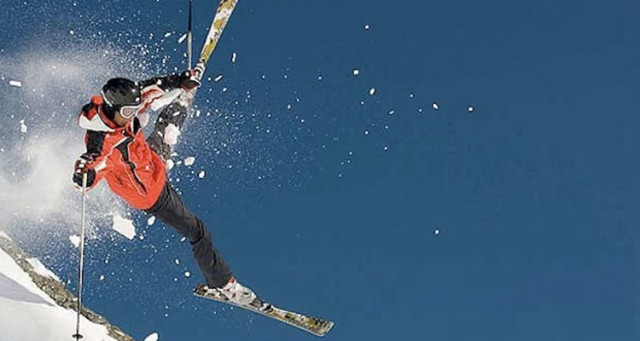Skiing is a sport that can be very serious because of injuries, which in some cases can prove as fatal injuries. It seems quite sensible to try to reduce as far as possible, the chances of incurring an injury, but unfortunately, many skiers minimize the importance of a serious skiing accident prevention thereby increasing the risk of accidents.
The main causes of accidents in the practice of skiing are basically three :
- Inadequate physical preparation.
- Tired from skiing.
- Failure to comply with the rules that govern the behavior of the ski slopes.
Skiing (but the same goes for all sports activities) requires adequate physical preparation; deal with physical exertion when our body is not optimally prepared to support it can have quite deleterious effects. It is appropriate to prepare in such a way as to have a good aerobic base and a decent strength to strength.
Unfortunately, many people come to the ski season totally unprepared from the physical point of view so much so that generally, before you start the season, it is recommended gymnastic (which should begin at least a couple of months before going on the slopes) to try to remedy at least in part to this problem; to tell the truth, not to be caught unprepared by the physical point of view, it would be enough to be sporting subjects throughout the course of the year.
Who, to cite one example, the practice run continuously exercising consistently definitely should not have any problems from the point of view of physical preparation. The more specific preparation, related to the practice area, will come by itself, it is important not to get an appointment with the snow totally unprepared. Obvious that the skier that the injury is more likely that skiers as the only physical activity for two or three months a year.
Even more trained skiers can have problems if you wake totally ignoring fatigue, depending on how it is dealt with. A day of skiing can be really challenging and extremely tiring, so it is good to make sure you recover properly. Force in an excessive way, ignoring the requests coming from the rest of our body is not a choice that denotes wisdom.
And the speed? Appear in all the obvious differences that may exist if you fall while you are skiing at a speed of 15 km/h or if you do it while we’re hurtling at 60 km/h, more speed the more we risk getting hurt increases. Equally obvious is that it is not only the speed influence on the increased risk of injury, the ability of the skier has a key role; skiing at 40 km/h can be normal and safe for some skiers, but extremely risky for others.
Every skier has a speed that should not pass because they do not have the ability to handle any emergency situation, this speed is called by many as critical speed, beginners in the critical speed is generally quite low, less than 20 km/h, while in a professional, skier can easily exceed 100 km/h, the critical speed is a variable parameter depending on the physical training of the moment, by the physical and mental condition, the type of bottom slope, the degree of crowding of the slopes and so on.
The crowding of the slopes is a parameter that must be taken into account if the track is very crowded we cannot ski coming to our speed limit criticism. It would be dangerous for us and for others, we must adapt to the environment by limiting our claims and choosing styles of skiing to suit the situation.
The jumps in skiing: should not risk it.
The stunts in skiing are not healthy. It is easy to understand, run the ski jumping is much more dangerous than the normal ski activity, and this applies to everyone, experienced or not. The risk of injury is much higher in those who became deeply involved in the jumps, as evidenced by the fact that in snowboarding, a discipline heavily infected by ” mania ” for the stunts, accidents are twice as frequent compared to the common practice skiing.
Those who do not intend to give up the ski acrobatics, as well as being very experienced, should practice this task by not jumping too high, soft landing zones in highly visible, especially with the soft snow. Jump or not, the fall in skiing is always lurking, of course, the more you should be experienced and less frequent falls.











